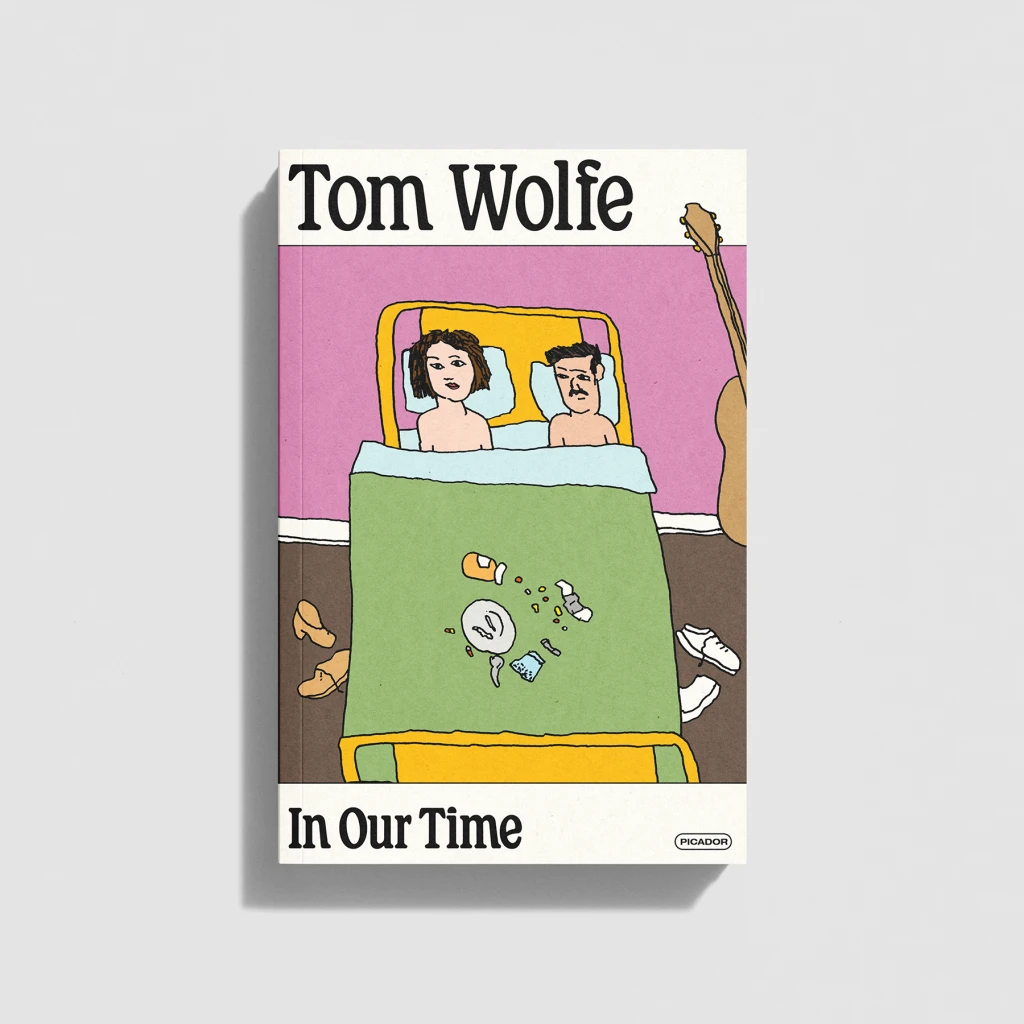The cult of AI. The crash(es) of crypto. The crisis at Boeing. The reality TV star trying to once again cudgel a path to the presidency. We have a lot of brilliant writers capturing and commenting on the zeitgeist today—but damn, I’d be curious to hear the late Tom Wolfe’s take on all things 2024.
And I’m not alone. The satirical New Journalism pioneer (1930–2018) was on the mind of Hank Cochrane when he joined Picador, the custodian of Wolfe’s works, as VP and associate publisher in 2020.
“One of the first things I did was look at what authors we should be reintroducing to a new generation of readers, and Tom Wolfe just made a ton of sense,” Cochrane says. “At this particular moment, there seems to be something in the air about Tom Wolfe as a cultural critic—someone with a really keen eye [on] the absurd and the sort of outrageous.”

Picador partnered with legendary illustrator Seymour Chwast to redesign 13 of Wolfe’s titles—the first of which just launched. Cochrane says the last time Wolfe’s catalog got a revamp was around 2008. And if you take a look at the author’s backlist from over the years, the passage of time is indeed evident. The books all feel firmly anchored to the era in which they were printed. Perhaps the best thing that Chwast’s new kaleidoscopic set of covers does is free the titles from the aesthetic moorings of any single decade.
“The thing about Seymour’s art and Tom’s writing, and why it makes such a perfect marriage of subject with artist, is because Seymour can tip to a retro vibe without making it feel dated,” Cochrane says. “When you’re reading Tom, you’re reading a piece of history, but you’re also reinterpreting it anew in the context of our current cultural moment. And I think Seymour’s art conveys that.”

Picador Senior Art Director Alex Merto, who worked on the project, agrees. “I’ve always been such a huge fan of Seymour’s work, so it was probably also a bit of a selfish decision [to commission him], but there’s no doubt that Seymour’s work complements Wolfe’s writing style,” he says. “They are both bold and witty with a satirical edge. We wanted to create a dialogue between the visual and the verbal, and Chwast’s art speaks to Wolfe’s writing in a way that few could achieve.”
In an email exchange, the 93-year-old Push Pin Studios cofounder notes that he never met Wolfe, but he was a fan. Chwast worked from a simple brief and description for each book, and worked in pen on paper in his signature recognizable style, with bursts of color added digitally. Seemingly unaffected by the passage of time, he also worked at his signature rapid pace, noting that each illustration took around four hours to complete. Back at Picador, every new image that hit Merto’s inbox prompted a curious and delighted gathering around it.
Merto says the process was seamless: “It’s like he just instinctively knew how to capture Wolfe’s writing.” The art director ultimately completed the covers with the typeface Henrietta, whose curious terminals provide a fitting frame for Chwast’s unique brand of imperfect precision.

The first three releases—The Electric Kool-Aid Acid Test, Radical Chic and Mau-Mauing the Flak Catchers, and The Kandy-Kolored Tangerine-Flake Streamline Baby—are out today, and the rest of the titles will roll out through May 2025. Each edition also features a new foreword by the likes of such authors as Taffy Brodesser-Akner, who Cochrane says writes in a style that harkens back to Wolfe, and provides a bit of a literary throughline to the project.
Almost a decade ago, during a photoshoot for an issue of Print magazine, I asked Chwast what it meant to him to be considered a legend of the field.
“It means nobody’s gonna call me for work anymore,” he deadpanned.
I am happy that he was, and continues to be, wrong. And I’d wager that readers who discover Wolfe’s work for the first time through the portal of these covers would agree.